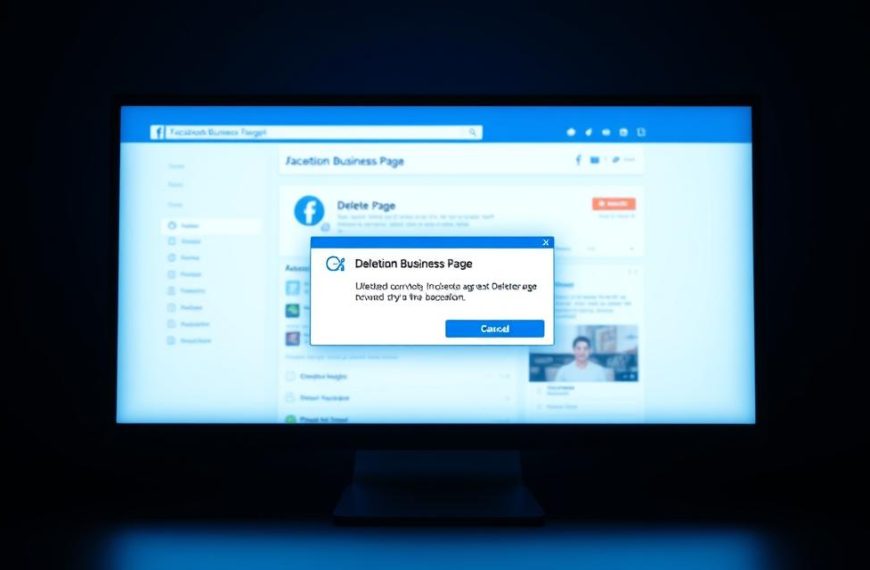Understanding the costs associated with business insurance is crucial for entrepreneurs and business owners. The average cost of business insurance can range from $50 to $200 per month, depending on the type of coverage, industry, and location.
The cost of liability insurance alone can vary, with general liability insurance costing around $40 to $100 monthly. A Business Owner’s Policy (BOP) averages $80 to $250 per month. These costs can be influenced by various factors, including the size of the business, its location, and claims history.
This comprehensive guide will explore the various costs associated with business insurance, providing business owners with essential information to make informed decisions about their coverage needs.
Understanding Small Business Insurance Basics
Understanding the fundamentals of small business insurance is essential for business owners to mitigate potential risks and financial liabilities. Small business insurance encompasses various types of coverage designed to protect businesses from different risks.
Types of Small Business Insurance Coverage
Small business insurance typically includes several key types of coverage. These are:
- General liability insurance, which safeguards against third-party claims for bodily injury and property damage.
- Commercial property insurance, crucial for businesses with physical assets, covering damage to buildings, equipment, and inventory.
- Professional liability insurance, also known as errors and omissions insurance, protecting service-based businesses from claims of negligence.
- Workers’ compensation insurance, legally required in most states for businesses with employees, covering medical expenses and lost wages for work-related injuries or illnesses.
| Type of Insurance | Coverage |
|---|---|
| General Liability | Third-party injuries and property damage |
| Commercial Property | Damage to business assets |
| Professional Liability | Negligence and professional mistakes |
Why Small Business Insurance Is Essential
Having adequate business insurance coverage is not only crucial for legal compliance but also for protecting your business’s financial stability and reputation. Without proper insurance, businesses face significant financial risks that could lead to bankruptcy in the event of a major lawsuit or catastrophic property damage.
“Insurance is a critical component of a business’s risk management strategy, providing financial protection against unforeseen events.”
In conclusion, understanding the basics of small business insurance is vital for any business owner. By knowing the types of coverage available and their importance, businesses can better protect themselves against various risks.
How Much Is Small Business Insurance on Average?
Knowing the average cost of small business insurance is essential for making informed decisions about coverage. The average costs provide a baseline for budgeting purposes, although actual premiums can vary substantially based on factors specific to your business.
General Liability Insurance Costs
General liability insurance is a fundamental coverage for small businesses, costing an average of $42 per month or $500 annually. This type of insurance protects businesses against bodily injury, property damage, and personal injury claims.
Business Owner’s Policy (BOP) Costs
A Business Owner’s Policy (BOP) combines general liability and commercial property insurance at a discounted rate, averaging $57 per month or $684 per year. BOPs offer better value than purchasing these policies separately, making them an attractive option for many small businesses.
Professional Liability Insurance Costs
Professional liability insurance, essential for service-based businesses, averages $61 per month or $735 annually. The cost varies significantly based on the profession and level of risk involved, making it crucial to assess your business needs carefully.
Workers’ Compensation Insurance Costs
Workers’ compensation insurance premiums average $45 per month or $542 annually per employee. The rates are heavily influenced by the industry’s risk level, payroll size, and claim history, highlighting the importance of maintaining a safe work environment.
When comparing insurance costs, it’s crucial to consider not just the premium but also the coverage limits, deductibles, and specific protections included in each policy to ensure adequate protection for your business’s unique risks.
Factors That Influence Small Business Insurance Costs
The cost of small business insurance is not arbitrary; it is calculated based on several critical factors. Insurance providers assess various elements to determine the level of risk associated with a business, which in turn affects the premiums charged.
Industry and Risk Level
The industry in which a business operates significantly impacts its insurance costs. High-risk industries such as construction, manufacturing, and healthcare face higher premiums due to the increased likelihood of accidents and claims. In contrast, low-risk industries like consulting or professional services typically enjoy lower insurance costs.
- High-risk industries: construction, manufacturing, healthcare
- Low-risk industries: consulting, professional services
Business Size and Revenue
The size of a business, often measured by its annual revenue and number of employees, directly correlates with insurance costs. Larger businesses with more employees and higher revenues typically face greater exposure to risks, potentially leading to larger claims. Consequently, insurers charge higher premiums to cover these increased risks.
| Business Size | Annual Revenue | Average Premium |
|---|---|---|
| Small | $100,000 – $500,000 | $500 – $2,000 |
| Medium | $500,000 – $2,000,000 | $2,000 – $5,000 |
| Large | $2,000,000+ | $5,000+ |
Location and Property Values
A business’s location plays a crucial role in determining its insurance premiums. Areas prone to natural disasters, high crime rates, or expensive litigation environments result in higher insurance costs. For instance, businesses located in flood-prone areas or regions with high crime rates will likely pay more for insurance.
Claims History and Experience
A business’s claims history is another influential factor affecting insurance costs. Businesses with previous claims are statistically more likely to file future claims, leading to higher premiums. Insurers view businesses with a clean claims history as less risky and therefore charge lower premiums.
By understanding these factors, small business owners can better navigate the complex landscape of business insurance and potentially reduce their insurance costs.
Small Business Insurance Costs by Policy Type
Understanding the various costs associated with small business insurance is crucial for making informed decisions about your company’s insurance coverage. Different policy types offer unique protections, and their costs can vary significantly based on several factors.
Commercial Property Insurance
Commercial property insurance costs vary widely based on the value of insured assets, building construction, fire protection systems, and location. On average, businesses pay around $67 per month or $804 annually for this coverage. It’s essential for businesses to accurately assess their property’s value to avoid being underinsured.
Cyber Liability Insurance
Cyber liability insurance has become increasingly important and expensive due to the growing frequency and severity of data breaches and cyber attacks. Average premiums are around $145 per month or $1,740 annually. Businesses handling sensitive customer data should prioritize this coverage.
Commercial Auto Insurance
Commercial auto insurance premiums depend on factors such as the number and type of vehicles, driving records of employees, and vehicle usage patterns. Typical costs are around $150 per month per vehicle. Ensuring that drivers have a good driving record can help reduce these costs.
| Policy Type | Average Monthly Cost | Average Annual Cost |
|---|---|---|
| Commercial Property Insurance | $67 | $804 |
| Cyber Liability Insurance | $145 | $1,740 |
| Commercial Auto Insurance | $150 | $1,800 |
| Commercial Umbrella Insurance | $75 | $900 |
| Tools and Equipment Insurance | $14 | $168 |
Commercial Umbrella Insurance
Commercial umbrella insurance provides additional liability coverage beyond the limits of underlying policies. It costs approximately $75 per month for $1 million in extra coverage. This type of insurance is vital for businesses that may face significant liability claims.
Tools and Equipment Insurance
Tools and equipment insurance is relatively affordable at about $14 per month, providing protection for portable equipment that may not be covered under standard commercial property policies. Contractors and tradespeople often benefit from this type of insurance.
When evaluating these different policy types, businesses should consider not only the premium costs but also the potential financial impact of being underinsured or uninsured for specific risks relevant to their operations. A comprehensive insurance strategy can help mitigate potential losses and ensure business continuity.
Regional Variations in Small Business Insurance Costs
Regional differences play a crucial role in determining small business insurance costs. The cost of insurance for small businesses can vary significantly depending on the location, with factors such as state regulations, local economic conditions, and risk levels influencing premiums.
State-by-State Cost Comparison
Insurance costs vary significantly by state, with some of the highest average premiums found in California ($804/year), New York ($780/year), and New Jersey ($720/year). States with more stringent regulatory requirements and higher mandatory coverage minimums tend to have higher insurance costs. For instance, a study on factors affecting small business insurance highlights the impact of state-specific regulations on premiums.
Urban vs. Rural Insurance Pricing
The distinction between urban and rural areas also significantly affects business insurance costs. Urban areas typically have higher insurance costs compared to rural areas due to increased property values, higher crime rates, and greater litigation risks. Businesses in major metropolitan areas can pay 20-40% more than similar businesses in rural settings. As noted by industry experts, “The difference in insurance pricing between urban and rural areas can be substantial, reflecting the varying levels of risk and economic activity.”
Understanding these regional variations is crucial for businesses, especially those with multiple locations or those considering expansion. By factoring insurance costs into their location decisions and budgeting processes, businesses can make more informed decisions and potentially reduce their insurance expenses.
How Insurance Companies Calculate Small Business Premiums
Understanding how insurance companies calculate premiums is crucial for small businesses to make informed decisions about their insurance coverage. Insurance companies use sophisticated algorithms and actuarial data to determine premiums, taking into account various factors specific to each business and policy type.
Policy Limits and Deductibles
Policy limits significantly impact premium costs, with higher coverage limits resulting in higher premiums. Most small businesses opt for $1 million per occurrence and $2 million aggregate limits for general liability insurance. Deductibles have an inverse relationship with premiums; choosing a higher deductible lowers your premium but increases your out-of-pocket expenses when filing a claim.
Classification Codes and Risk Assessment
Classification codes are industry-specific identifiers that insurers use to categorize businesses according to their risk profiles. Each code carries its own base rate, serving as the foundation for premium calculations. Businesses with higher risk profiles are assigned higher base rates, resulting in higher premiums.
Business Structure and Operations
Business structure affects liability exposure, with sole proprietorships, partnerships, LLCs, and corporations presenting different risk profiles that influence insurance premiums. Insurers assess the business operations, including the number of employees, revenue, and industry-specific risks, to determine the premium.
Credit History and Financial Stability
Insurers increasingly consider credit history and financial stability when calculating premiums. Businesses with strong financial records are statistically less likely to file claims and more likely to implement effective risk management practices, resulting in lower premiums.
In conclusion, insurance companies calculate small business premiums by assessing various factors, including policy limits, deductibles, classification codes, business structure, and credit history. By understanding these factors, small businesses can make informed decisions about their insurance coverage and potentially reduce their premiums.
- Insurance companies assess dozens of variables specific to each business and policy type to determine premiums.
- Businesses can balance immediate savings against potential future costs by choosing appropriate deductibles.
- Classification codes play a crucial role in determining premium costs based on industry-specific risk profiles.
- Business structure and operations significantly influence insurance premiums.
Strategies to Reduce Small Business Insurance Costs
There are several ways small businesses can reduce their insurance costs without compromising on coverage. By implementing effective strategies, businesses can lower their premiums and maintain a healthy bottom line.
Bundling Insurance Policies
Bundling multiple insurance policies with the same provider, such as combining general liability and commercial property insurance into a Business Owner’s Policy (BOP), can result in premium discounts of 10-15% compared to purchasing separate policies.
Comparing Quotes from Multiple Providers
Comparing quotes from multiple insurance providers is essential, as premiums can vary by as much as 30-40% between insurers for identical coverage due to differences in underwriting guidelines and risk appetites.
Implementing Risk Management Practices
Implementing comprehensive risk management practices, such as employee safety training, security systems, fire protection measures, and formal quality control procedures, can significantly reduce premiums while also minimizing the likelihood of claims.
Choosing Higher Deductibles
Choosing higher deductibles can substantially lower premium costs, but businesses should ensure they have sufficient cash reserves to cover these higher out-of-pocket expenses in the event of a claim.
By adopting these strategies, small businesses can effectively reduce their business insurance costs and allocate resources more efficiently.
Conclusion: Making Informed Decisions About Small Business Insurance
Business owners must navigate a complex landscape to find the optimal balance between insurance costs and coverage. To make informed decisions, it’s essential to understand the true cost of small business insurance and how it impacts your business’s financial stability.
The average cost of small business insurance ranges between $50 and $200 per month, depending on the type of coverage, industry, and location. By understanding your specific risks, comparing quotes from multiple providers, and implementing risk management practices, you can find the best coverage at affordable rates.
Regular reviews of your insurance policies ensure they remain aligned with your evolving business needs and risk profile. Working with knowledgeable insurance professionals can provide valuable guidance in navigating the complex landscape of business insurance options.














